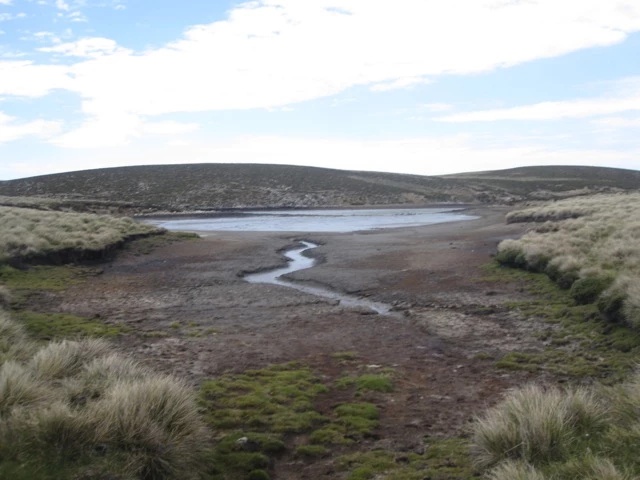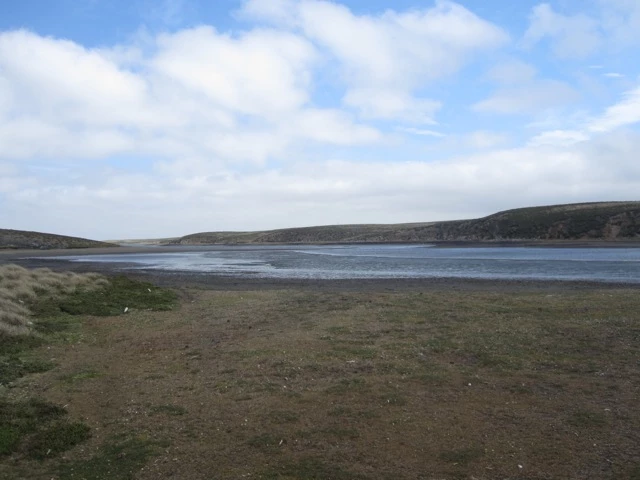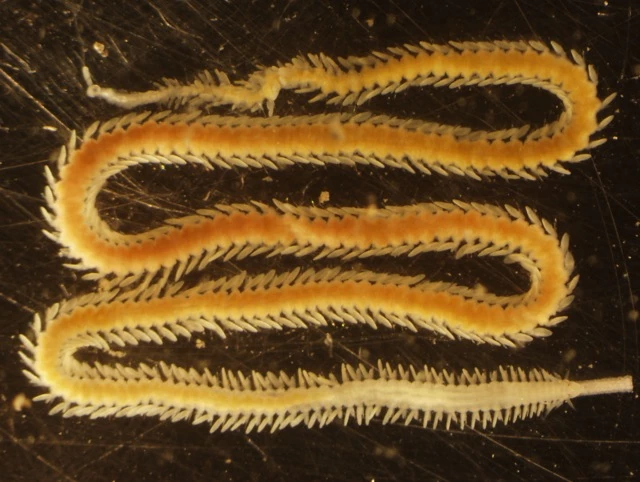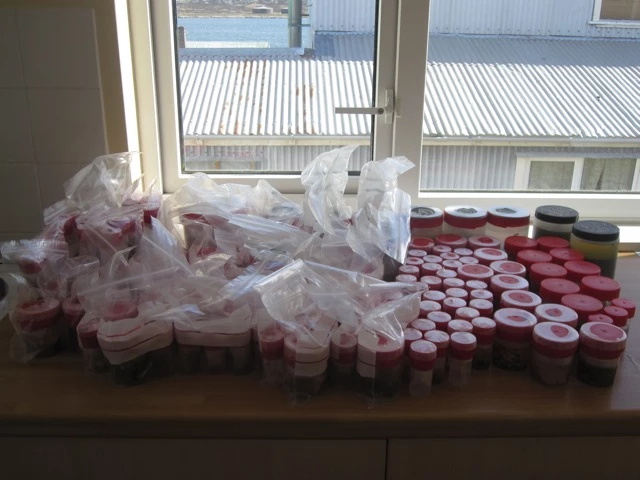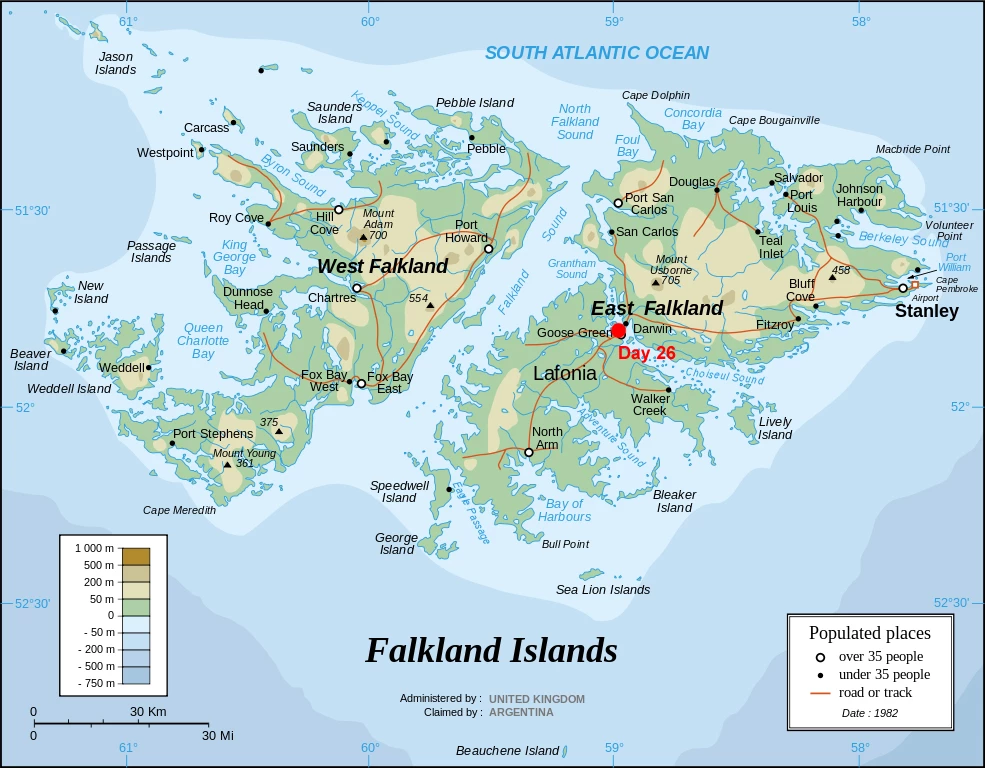Polychaete research in the Falklands by Teresa Darbyshire - day 26-28
, 12 December 2011
My directions turned out to be accurate and easy to follow and I arrived at Teal Creek in plenty of time for the tide. The biggest problem I had was deciding where to stop along the creek. At the time I arrived the tide still had a way to go out so it was difficult to know how much ground would be uncovered. I made my decision and walked out into the small inlet off the creek (photo 1). The area was very soft but the depth of the mud varied and I didn’t venture too far into deeper areas, wary of getting stuck. As I dug around I was surprised to find the same new ragworm that I had found at Sand Bay the previous day, having not found it at any site before and now two in a row. There were also many of the bamboo worms that seem to dominate the shores here.
I left the creek shortly before actual low tide in order to give myself time to get over to Camilla Creek where low tide would be in just over 2 hours time. The tide hadn’t gone down much for a while so I didn’t think I would be missing anything new being uncovered. As I drove out past the previous choices I had had for stopping in the area I realised that the earlier bays had much larger areas of mud flat exposed and I thought maybe I had made a mistake in my choice of sampling site. However, on reflection, the water had retreated to the far side of the creek from these bays and that would have left me with no access to water across the mud which is essential during the collecting, so I probably did make the right choice after all.
Camilla Creek was reached fairly quickly with some expanses of mud flat already exposed. It was a much larger, wider creek (photo 2) than Teal but the shore itself seemed more gravelly leading down to it. I quickly realised that although the approach was easier, the mud itself was softer and deeper and probably not to be ventured too far into without additional company for safety and better sampling gear than what now felt like a very short pair of wellies. After extricating myself from the mud I skirted around the edge of the water level in the small bay sampling different spots and finding quite a variety of different mud, sand and hard areas to try.
Eventually it was time to leave for the journey back. This time I kept the window tightly shut and arrived back slightly less dusty than the previous night. There was at least one new worm for my list from the samples in the form of another different paddleworm (photo 3).
Saturday saw the last of the formaldehyde to alcohol changing where possible. The later samples would all have to stay in formaldehyde though as they needed to stay in that fluid for at least a few days to make sure they were properly ‘fixed’ before being moved to alcohol. That will now be done after both I and they arrive back in Cardiff. This was then followed by several hours of painstakingly sealing and taping around the lid of each pot and then sealing them into bags in order to reduce the risk of any fluid leakage during transport. As there were around 200 pots to do this took a while! The photo shows all of the pots at various stages of packing.
This morning (Sunday) saw a few more hours of sealing and packing until I had 7 boxes of packed samples ready for posting tomorrow (I can’t bring them back on the plane with me sadly).
There had been plans to do a last shore dive locally this afternoon but unfortunately the wind has scuppered our plans, blowing strongly all day. As it would have been a shallow site with entry off the shore, the windy conditions would have made getting in and out of the water difficult, conditions underwater uncomfortable and visibility poor, so an obvious decision was made. Still disappointing though as everyone had told me what a lovely dive it was going to be!
Tomorrow’s plan includes my final talk at the Fisheries Department in the morning followed by getting those parcels on their way and then getting my own packing started. Only one more day left here!
